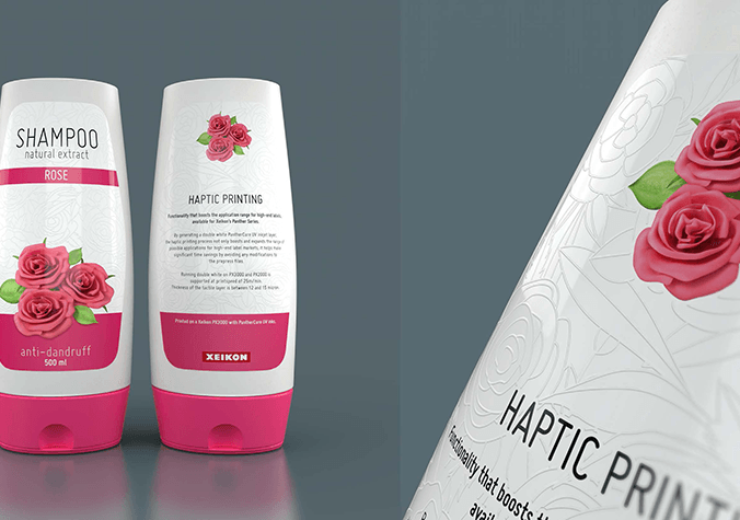Printers can use the new solution from Xeikon to create designer labels with greater tactility, textures and a luxury feel

Image: Xeikon upgrades Panther technology for ‘haptic effect’ in labels. Photo: Courtesy of Xeikon.
Digital printing solutions provider and Flint Group company Xeikon has developed a solution for printers to generate a tactile layer, responsible for a ‘haptic effect’ in print, and enhance their range of labels.
Printers can use the new solution, a combination of the Xeikon X-800 workflow and the PantherCure UV ink, to create designer labels with greater tactility, textures and a luxury feel.
The company’s new haptic printing process expands the range of applications for high-end label markets and also saves time by avoiding modifications to the prepress files.
Tactile effects on labels are in demand in the beer, beverage, food, and health and beauty markets.
Xeikon product management director Jeroen Van Bauwel said: “The technology generating the tactile and textured layer is embedded in the Panther’s X-800 workflow. It is the brand owners and designers who define the structure, shape and form of the design.
“When the file is received, the workflow automatically recognizes the elements of the design and generates the information required to drive the print head – that’s what creates the haptic effect in print on the end product.”
Xeikon solution optimises Panther workflow
The company has developed a solution, embedded in the X-800 workflow, to automate the optimisation of the white ink layer to improve the workflow on the Panther.
For the production of labels on clear facestocks, such as premium beer or health and beauty labels, an opaque white is required to make the design stand out. However, this could result in varying ink layer thicknesses across the web, generating a telescoping effect on the printed rolls.
Previously, this problem was overcome by printing smaller rolls, resulting in frequent roll changes and waste in material and time. Some printers used to spend more time in prepress to reduce the amount of white.
However, printers can now handle the time-consuming prepress work in a fully automated way by using the X-800 digital front-end without any intervention in the production process.
The X-800 automatically reduces the white layer depending on the colours on top of the layer, increasing uptime during the printing and converting processes.
In addition, print service providers (PSPs) will be able to save on cost because of the reduced amount of white ink and the reduction of waste.
